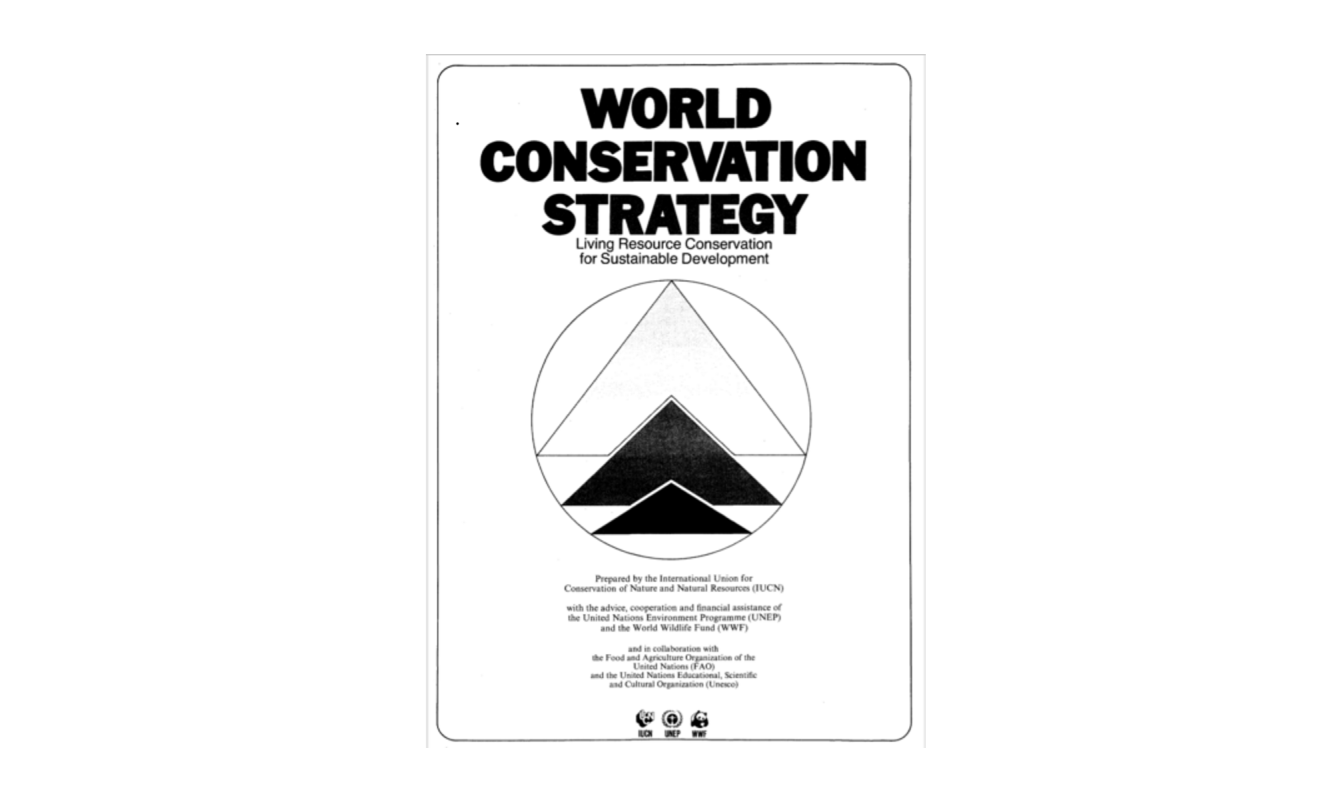
Understanding Nature Conservation as Sustainable Use
17 Mar 2019
In 1980, the International Union for Conservation of Nature (IUCN) — “with the advice, cooperation and financial assistance of the United Nations Environment Programme (UNEP) and the World Wildlife Fund (WWF) and in collaboration with the Food and Agriculture Organization of the United Nations (FAO) and the United Nations Educational, Scientific and Cultural Organization (UNESCO) published the World Conservation Strategy: Living Resource Conservation for Sustainable Development.
The World Conservation Strategy was one of the first global strategies for sustainable development. It set out the centrality of conservation for sustainable development and, in turn, the centrality of sustainable use for conservation. A few quotes on conservation as sustainable use follow. However, it is well worth reading the original document which is a relevant today as it was almost was 39 years ago.
“The aim of the World Conservation Strategy is to achieve the three main objectives of living resource conservation:
a. to maintain essential ecological processes and life-support systems (such as soil regeneration and protection, the recycling of nutrients, and the cleansing of waters), on which human survival and development depend;
b. to preserve genetic diversity (the range of genetic material found in the world’s organisms), on which depend the functioning of many of the above processes and life-support systems, the breeding programmes necessary for the protection and improvement of cultivated plants, domesticated animals and microorganisms, as well as much scientific and medical advance, technical innovation, and the security of the many industries that use living resources;
c. to ensure the sustainable utilization of species and ecosystems (notably fish and other wildlife, forests and grazing lands), which support millions of rural communities as well as major industries.”
“Conservation is defined here as: the management of human use of the biosphere so that it may yield the greatest sustainable benefit to present generations while maintaining its potential to meet the needs and aspirations of future generations. Thus conservation is positive, embracing preservation, maintenance, sustainable utilization, restoration, and enhancement of the natural environment. Living resource conservation is specifically concerned with plants, animals and microorganisms, and with those non-living elements of the environment on which they depend.”
“Conservation, like development, is for people; while development aims to achieve human goals largely through use of the biosphere, conservation aims to achieve them by ensuring that such use can continue.”
“Conservation is a process — to be applied cross-sectorally — not an activity sector in its own right. In the case of sectors (such as agriculture, fisheries, forestry and wildlife) directly responsible for the management of living resources, conservation is that aspect of management which ensures that utilization is sustainable and which safeguards the ecological processes and genetic diversity essential for the maintenance of the resources concerned. In the case of other sectors (such as health, energy, industry), conservation is that aspect of management which ensures that the fullest sustainable advantage is derived from the living resource base and that activities are so located and conducted that the resource base is maintained.”
“For a subsistence society, sustainable utilization of most, if not all, its living resources is essential… Sustainable utilization is also necessary for the rational planning and management of industries dependent on the resources concerned (for example, timber, fish). Sustainable utilization is somewhat analogous to spending the interest while keeping the capital. A society that insists that all utilization of living resources be sustainable ensures that it will benefit from those resources virtually indefinitely.”
DOI: 10.2305/IUCN.CH.1980.9.en
We support the free flow of information. Please share:
More content
-

What Foot and Mouth Disease-free means for South Africa’s game meat trade
Ms Lydia Daring Bhebe…Explore the latest developments in South African provinces achieving and maintaining Foot and Mouth Disease (FMD) free status…
Articles -

The world wildlife trade regulator is 50 – here’s what has worked and what needs to change
Daniel Challender…Most countries implement Cites, the Convention on International Trade in Endangered Species of Wild Fauna and Flora as…Articles -

Enabling Sustainable Wildlife Trade
Prof Francis VorhiesEnabling sustainable wildlife trade is a key policy measure for growing Africa's wildlife economy. In this respect, CITES…
Articles -

Has CITES become too complicated to be effective?
Prof Francis VorhiesGovernments agreed to the text of CITES in the 1970s, which is quite straightforward. However, the agreement’s implementation…
Articles -

From poachers to providers: Can Africa's wild meat market save wildlife?
Dr Wiseman NdlovuHave you ever considered how wild meat could be more than just a cultural staple but also a…
Articles -

As a fellow of the African Wildlife Economy Institute (AWEI), I am excited to attend the upcoming 3rd…
Articles -

A theory of change to improve conservation outcomes through CITES
Dr Michael 't Sas-Rolfes…Here we articulate the implied theory of change (ToC) underpinning the design and operation of CITES (Convention on...
2025Research -

Wild Meat Value Chain Integration Systems: Opportunities for Value Chain Formalisation and Scaling in Africa
Dr Wiseman Ndlovu…Establishing a legal, safe and sustainable wild meat sector promises to potentially reduce demand for illegally sourced meat...
2025Research -

AWEI's 2024 Wildlife Economy Dialogue Series
Ms Emily TaylorRediscover 2024: A year of insight and inspiration
In 2024, AWEI proudly hosted three ground-breaking dialogue series in…
Articles
Get updates by email
Through impactful research, stakeholder engagement, and professional development, AWEI is supporting the wildlife economy across Africa. Please subscribe for occasional updates on our work and forthcoming events.
Sign up for a quarterly dose of AWEI insights
In a complex and changing world, AWEI generates strategic ideas, conducts independent analysis on wildlife economies, and collaborates with global scholar-practitioners to provide training and expertise for biodiversity conservation, climate resilience, and inclusive economic opportunities in Africa.
